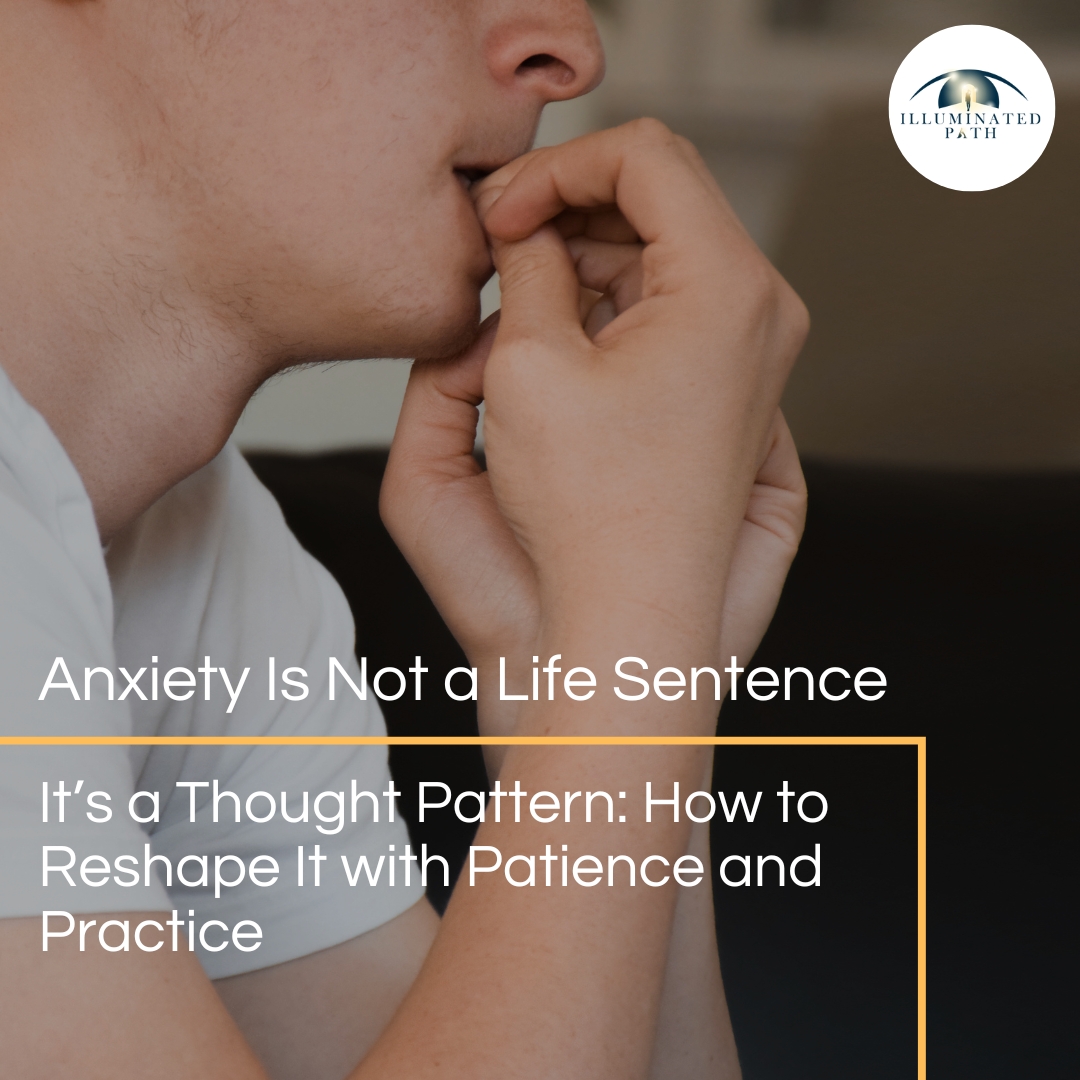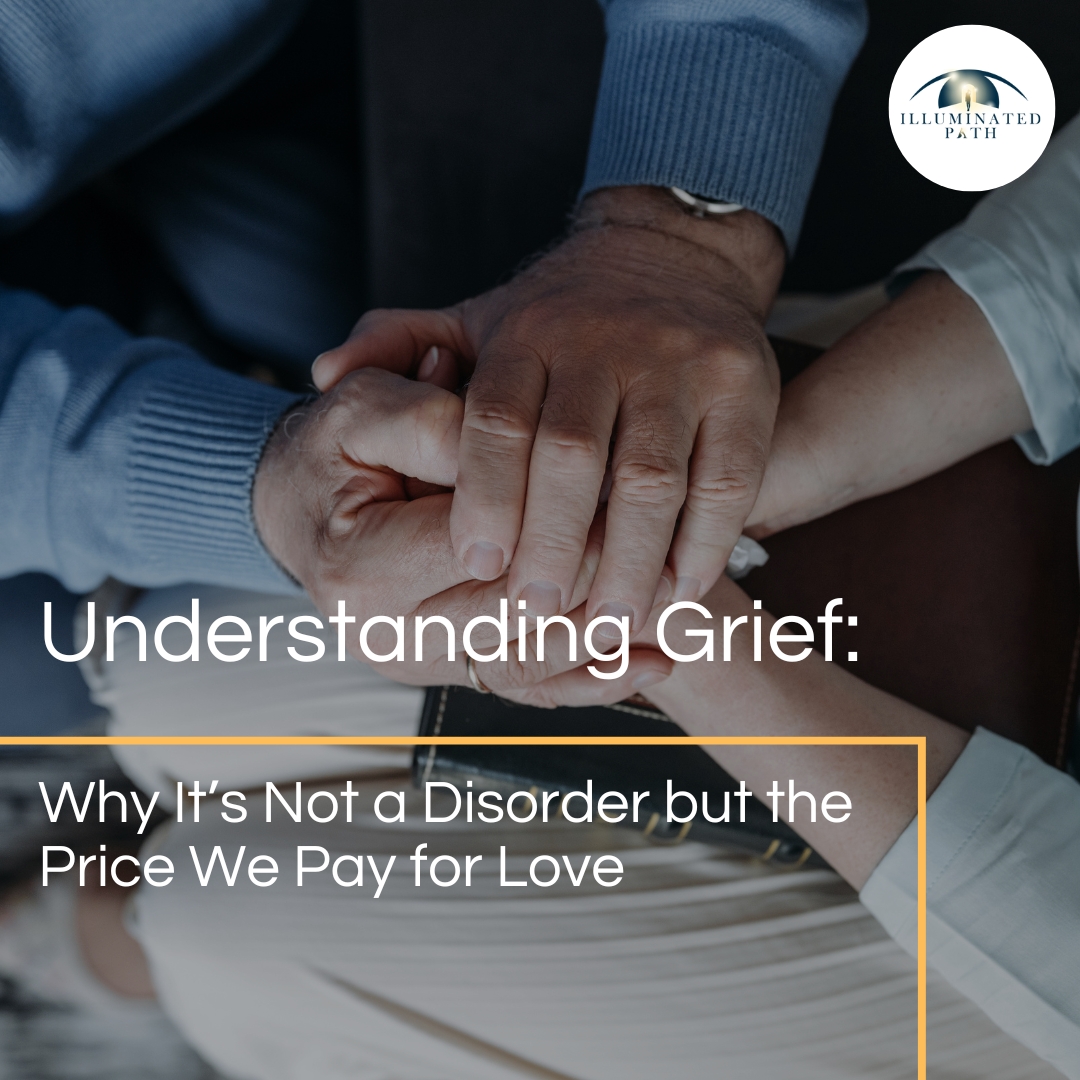
Anxiety can feel like a life sentence—relentless, exhausting, and inescapable. It can settle into your daily life like an unwanted roommate, whispering worst-case scenarios into your ear and clouding even your happiest moments with unease.
But here’s the truth: anxiety isn’t your identity, your destiny, or a permanent condition. It’s a pattern of thoughts—learned, habitual, and most importantly, changeable. With awareness, patience, and practice, these thought patterns can be reshaped.
If you’re someone who has felt stuck in a cycle of anxious thinking, this post is for you. You’ll learn what anxiety really is, how it operates in the mind, and most importantly, what you can do to break free from its grip—one thought at a time.
Understanding Anxiety as a Thought Pattern
Let’s begin by redefining anxiety—not as a character flaw, but as a mental habit.
Anxiety often stems from repetitive, unhelpful thoughts about what might go wrong. These thoughts are part of a larger system of cognitive distortions—ways the brain tries to make sense of uncertainty but ends up creating distress instead.
Some of the most common anxiety-driven thought patterns include:
Catastrophizing: Imagining the worst possible outcome in every situation, even if it’s unlikely.
All-or-nothing thinking: Believing that things are either perfect or a disaster, with no in-between.
Overgeneralizing: Assuming that one bad experience means every similar experience will be bad.
Personalization: Blaming yourself for things you’re not actually responsible for.
Fortune-telling: Predicting negative outcomes as if they’re facts.
These patterns don’t happen because you’re weak or broken. They happen because your brain is trying to protect you—anticipating threats to keep you safe. But when these mental habits run unchecked, they become the source of the very distress they’re trying to prevent.
The Brain Can Change—And So Can Your Thoughts
One of the most hopeful discoveries in modern psychology and neuroscience is the concept of neuroplasticity. Simply put, your brain can change.
When you practice a new thought or behavior repeatedly, your brain creates and strengthens neural pathways to support it. Just like muscles adapt through training, your mind can learn healthier ways of thinking.
This is where therapies like Cognitive Behavioral Therapy (CBT) and Mindfulness-Based Cognitive Therapy (MBCT) come in. They don’t just help you cope—they help you retrain your mind.
In CBT, you learn to identify distorted thoughts and replace them with more balanced and realistic ones. For example, instead of thinking “I’m going to fail,” you might replace it with “I’ve prepared as best I can, and I’ll do my best.” This small shift changes your emotional response—and over time, it can change your life.
Mindfulness, on the other hand, teaches you to observe your thoughts without judgment. When you stop identifying with every anxious thought that enters your mind, you give yourself space to choose how you want to respond, rather than react out of fear.
How to Begin Reshaping Anxious Thoughts
Changing the way you think doesn’t happen overnight. But it can happen. Here are some practical, proven techniques that support this transformation.
1. Start With Awareness
Before you can change a thought, you have to notice it. Pay attention to moments when anxiety spikes. What were you thinking right before you felt anxious? What story were you telling yourself?
Keeping a thought journal can be immensely helpful. Write down your anxious thoughts as they come, along with what triggered them and how you responded. Over time, you’ll begin to notice patterns—specific fears, common themes, or situations that set off your anxiety.
2. Challenge the Narrative
Once you’ve identified recurring thoughts, it’s time to challenge them. Ask yourself:
Is this thought based on facts or fear?
What evidence supports this thought? What evidence contradicts it?
If my friend had this thought, what would I say to them?
This technique, known as cognitive restructuring, helps you replace unhelpful beliefs with more balanced ones. For example, “I’ll never be good enough” might shift into “I’m still learning, and that’s okay.”
3. Practice Mindfulness to Create Space
Mindfulness helps you step back from your thoughts instead of getting swept away by them. When practiced regularly, mindfulness increases emotional regulation, reduces reactivity, and strengthens your ability to stay present.
Try starting with just five minutes a day. Sit quietly, focus on your breath, and when thoughts arise (as they inevitably will), gently return your attention to your breath. You’re not trying to eliminate thoughts—just observe them without judgment. Over time, this practice builds mental clarity and calm.
4. Run Behavioral Experiments
Anxiety thrives on assumptions. One of the most effective ways to test those assumptions is through behavioral experiments.
Let’s say you’re convinced that speaking up in meetings will lead to embarrassment. You might challenge this by preparing one small comment to contribute and then noting the outcome. Chances are, the worst-case scenario won’t happen—and you’ll collect evidence that your fear isn’t based in reality.
Each time you take a small step toward your fear and find that you’re okay, your brain rewires itself with that new information.
Change Takes Time—So Be Patient With Yourself
One of the most overlooked parts of anxiety recovery is the importance of patience. Changing thought patterns is like learning a new language—it requires time, repetition, and self-compassion.
You’ll have days where your progress feels strong, and days where it feels like you’ve taken three steps back. That’s normal. What matters isn’t perfection, but persistence.
Here are a few ways to stay consistent on your journey:
Set Realistic Goals
Instead of aiming to “get rid of anxiety,” try setting smaller, more achievable intentions, like:
“This week, I’ll practice mindfulness for 5 minutes each day.”
“I’ll write down one anxious thought and challenge it once a day.”
“I’ll speak kindly to myself when I’m feeling overwhelmed.”
Consistency is more powerful than intensity when it comes to change.
Celebrate Small Wins
Anxiety often makes us focus on what’s going wrong. Flip that script by actively acknowledging what’s going right.
Did you challenge a negative thought today? Great.
Did you pause before reacting to an anxious feeling? That counts.
These moments matter—and they build momentum.
Final Thoughts: You’re Not Broken—You’re Becoming
Anxiety isn’t a sign that something is wrong with you. It’s a signal that your mind is working overtime to keep you safe—just in a way that’s no longer helpful.
When you start seeing anxiety not as a permanent condition, but as a pattern of thought that can be understood and reshaped, everything changes. You stop fighting yourself and start working with your mind—gently, consistently, and with compassion.
Remember: change doesn’t come from trying to be perfect. It comes from showing up every day with the willingness to try. One thought, one breath, one choice at a time.
And if you ever feel stuck, know that help is available—and you’re not alone on this journey.

The Author
Dr. Shadi Souferian Psy. D.
Licensed Clinical Psychologist
Therapist And Psychologist in Los Angeles And Beverly Hills.





